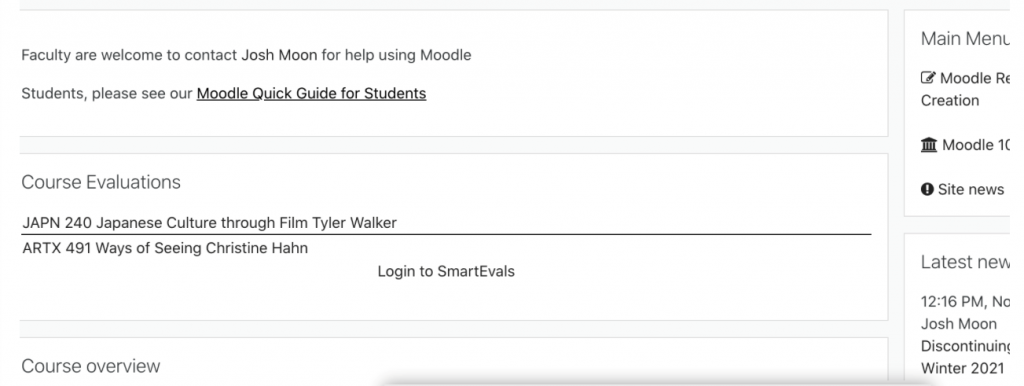For fall 2020, the student response rate to online course evaluations at K was 65%.
In the paper-and-pencil era of course evaluations, response rates to the the in-class surveys were typically around 90% — dependent simply on the proportion of students in attendance on evaluation day. Winter 2020 was the first term of online course evaluations using the SmartEvals platform. Even with the disruptions caused by the emerging pandemic shutdowns on Thursday and Friday of tenth week and the winter final exam period in March 2020, the response rate was 85% in winter 2020. With the expectation that these online evaluations would be completed in the classroom during class time, there was every reason to expect response rates similar to the paper-and-pencil days.
Then spring happened. We all remember the widespread difficulties experienced by both students and instructors. Alarming numbers of students faded away over the course of that term, during what we’ve come to call “contingency online instruction.” The wave of protests and civil unrest in late May and early June drained whatever remained of class engagement at the end of that term. Those factors can be easily seen in the very low 35% response rate to online course evaluations for spring 2020.
The fall 2020 response rate of 65% was good news compared to the spring term, but far lower than we’ve come to expect. The switch to online course delivery disrupts the tried-and-true technique of in-class administration of the evaluations. I recently reached out to instructors whose students responded at high rates this fall, and have compiled here some of the advice they offered.
Put the online evaluation where students’ eyes are
Let’s take a minute to demystify the process for accessing course evaluations. The 9th week reminder emails are a helpful resource, but you don’t need to rely on them for the web address of the evaluations site. It is important to remember that there aren’t web addresses for individual class evaluations (which would be hard to remember). Rather, the address kalamazoo.smartevals.com (a shorter option is simply smartevals.com) takes the user to a login page. The login sequence happens here on Kalamazoo College’s campus, and then a secure authorization is sent to SmartEvals. Once authenticated, the user sees their own information: for students, that includes links to all available course evaluations.
With that in mind, a number of instructors whose students responded at high rates reported putting the link in all class materials during tenth week: on the Moodle page, in Teams messages, and in emails. For the latter, it’s easy to paste the address kalamazoo.smartevals.com along with a reminder to complete the course evaluations in any email you plan to send to your class. In addition, SmartEvals provides a handy mechanism to send student reminders through the instructors’ SmartEvals page. The advantage of the latter is that only students who haven’t yet completed the course evaluation will receive the reminder.
One final thing: for the first time this term we enabled a feature in Moodle that posts links to available SmartEvals course evaluations at each user’s Dashboard screen:

Frequent Reminders
Like many parts of our course structure, we’ve found that students want and need frequent reminders about what to do when. That goes for course evaluations in the online era as well. Many instructors in high-response-rate courses reported making daily reminders in tenth week about online evaluations at kalamazoo.smartevals.com
Establish a culture of feedback in your course
I heard from instructors about a most important factor — creating a climate where feedback, both quantitative and qualitative, is given frequently (in both directions) and valued.
I’ve talked to several instructors who have found this term that online student submissions have led to a streamlined workflow by which written feedback on student work is faster to write and more detailed than in the old paper-and-pen days. Actionable narrative feedback takes practice, and we can lead students by our example in this way.
TLC has urged all instructors to use informal mid-term student course surveys to get student feedback about the course in progress. Sharing the results of the survey and explicitly acting on that feedback to change the course mid-stream creates a powerful atmosphere for productive feedback.
Remind your students (and yourself!) why it matters that we hear from them.
Finally, many of the instructors who volunteered their advice about motivating their students to respond concluded with a simple and powerful idea. They made the request personal: “Please respond to the survey for me, because it is important to me that I hear from you about how this course supported your learning and how I can do better in the future.”
